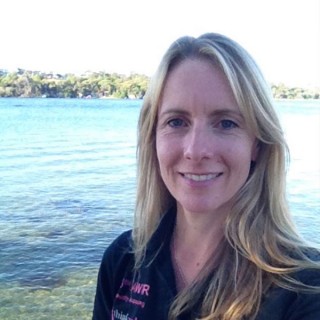Research vessel Falkor left Broome, in North Western Australia today and has begun her voyage of discovery of the remote oceanic reefs of the Timor Sea. Scientists and crew are excited to finally be underway after lengthy preparations. Loading all the equipment for a research cruise always takes time with the process further complicated by massive king tides of up to 10 meters. The region experiences some of the largest tidal changes in the world, which severely limits the window for loading equipment and supplies. A 10 meter drop in water at the dock means that at low tide Falkor would be sitting in mud. However, it is these strong horizontal currents generated by massive tides that are of greatest interest to the research team onboard. In the North West marine region connectivity and productivity across the reefs is predominantly driven by these tides. This is very different to most tropical reef systems such the Great Barrier Reef on the east coast of Australia driven by wind and wave action.

Biodiversity hot spots

Greg Ivey and Ryan Lowe from the University of Western Australia (UWA), and Andrew Heyward from the Australian Institute of Marine Science (AIMS) are co-leading the expedition. In addition, the cruise has a science party of 14 participants from UWA, AIMS and Stanford University, Griffith University and Curtin University. The reefs they will be visiting form part of a large group of emergent and submerged coral reefs that characterize the region. Just a few reefs emerge from the ocean surface (e.g. Scott Reef) with most remaining relatively unknown and hiding beneath the surface. Past surveys of the submerged reefs have found them to support exceptional biodiversity and species richness greater than similar features found on the better known Great Barrier Reef’. They also host many of the same species as found on the emergent reefs in the region. Therefore, these hidden reefs may act as important stepping stones for enhanced biological connectivity of Australia’s northwest.
Connecting our reefs


While we know the reefs support some exceptional biological communities, the ecological processes driving the biodiversity associated with these emergent and submerged reefs remains unknown. Therefore, the focus of this research is to understand the connections between ocean circulation, habitat patterns and benthic biodiversity. Researchers will lower sensors to measure average currents, the intensity of turbulent mixing, temperature, salinity, and a range of biological and chemical parameters. Their first stop will be the oceanic reef system of Scott Reef, located more than 400 kilometres north of Broome. This remote reef system will take around 24 hours to reach by boat giving scientist time to prepare some of the equipment that will be deployed. Currently the boat is loaded with hundreds of boxes all of which need to be unpacked, sorted and assembled.

